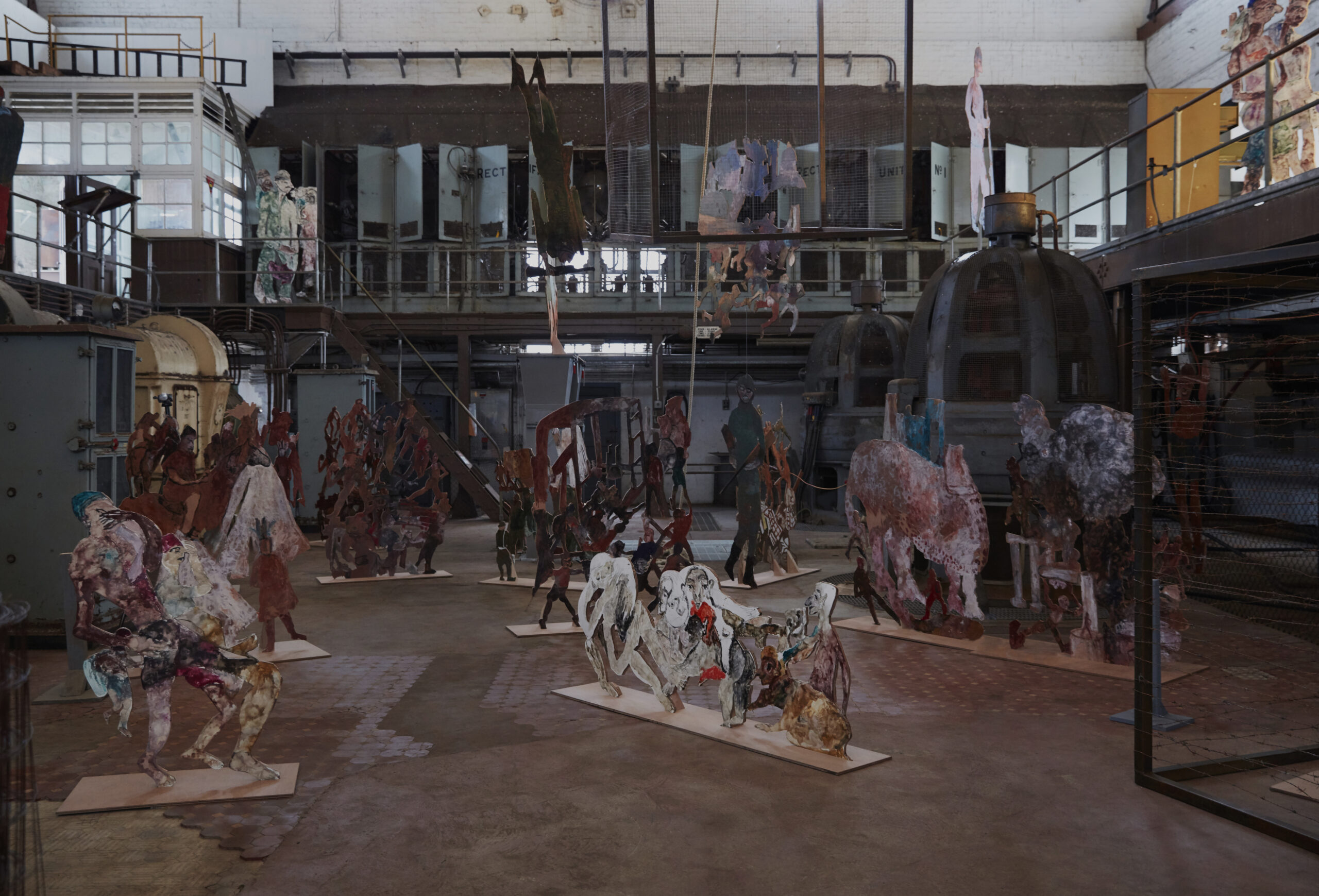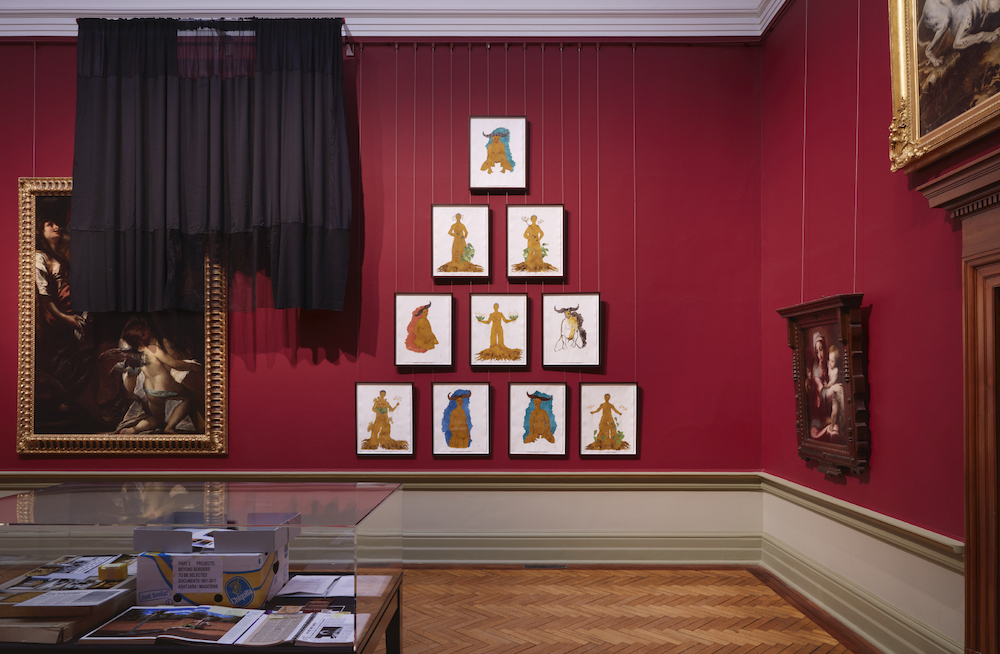The First Wave

By Nanette Orly
22 May, 2020
The 22nd Biennale of Sydney (BoS) attracted much anticipation and excitement in 2018, not only in the appointment of Wiradjuri artist Brook Andrew as artistic director, but also for the First Nations title and theme of NIRIN—a Wiradjuri word that can be translated to ‘edge’. Finally, after forty-seven years since the BoS’s inception, this international platform would present a variety of narratives often missing from our cultural institutions, under the direction of someone who, through shared experience, genuinely understood why these voices should be placed at the forefront. I was excited. An event brimming with First Nations voices from around the world has been far overdue in Australia.
NIRIN is a welcome curatorial change within major institutions across Sydney in 2020: a large-scale gathering of underrepresented people connected through their lived experiences of colonialism, separated only by geography, together at last in one city. International artists and collectives with cultural ties to neighbouring and far countries such as Haiti, Brazil, Iran, South Africa or Japan, are presented across Sydney alongside our own local artists. Walking through the various locations in which the BoS is spread—Cockatoo Island, the Museum of Contemporary Art, the Art Gallery of New South Wales, Artspace, Campbelltown Arts Centre and the National Art School, I experienced a sense of relief. For once, I did not have to laboriously find fault in a lack of representation. This is true of Misheck Masamvu’s bold large-scale painting ‘Therapy Lounge’ (2019) and The Mulka Project’s immersive video experience ‘Watami Manikay (Songs of the Winds)’ (2020), as well as Lhola Amira’s sound installation ‘Philisa: Ditaola’ (2018-20)—these are but some of the works that really moved me (and I fanatically noted down each artist highlight to research later).
However, the initial excitement I felt walking through each space would, by the time I got home, be compromised by a new tension: could a de-colonising biennale successfully transcend the colonial structures it seeks to subvert, and could that subversion create a real lasting effect on our major institutions?
While the visibility of people previously left out of Australia’s cultural dialogues is gaining precedence, and organisations are currently attempting to diversify their programs, this change—real structural change—is decisively slow. NIRIN is an important first in disrupting the norm by presenting a more equal representation of the world we live in today. As with all firsts in life, the choices we make—the inevitable cause and effect—must be evaluated.
The relief and anticipation felt by the arts community upon the announcement of Brook Andrew as the next BoS artistic director was not disproportionate. That being true, sensationalising one-off curatorial opportunities can put undue pressure on the guest curator or artistic director to deliver as much content as possible during their temporary appointment to radicalise or decolonise a space. In the case of NIRIN, that swing meant showing over 100 artists and collectives, the largest number invited to date. But there are practical dangers in having numbers like this: how much support can you really provide to artists when the internal organisation—a very small team of predominantly white BoS staff—is stretched so thin? Even if the projects are artist-led, contributors still need logistical and cultural support. If the team responsible for this support are mostly white and unaware of cultural contexts, a lack of care will surface after simmering beneath layers of frustration and mistranslation.
It would have been more encouraging to see the decolonising mission of NIRIN represented across the entire organisation at the BoS. This was an amazing opportunity to hire a full suite of practitioners from a variety of cultural backgrounds, those with experience in artist liaison, curating, education, marketing and administration to assist and shape NIRIN as a concept from inside the organisation.
There’s no shortage of people of colour who would have genuinely loved to work for this iteration of the BoS. It’s disappointing to see little inward change take place, as there’s still a failure to share these career advancing opportunities. I will remain dubious of public facing diversity tactics flaunted by large-scale institutions, like the BoS, until we see some real structural changes. Now that NIRIN exists as a precedent, will the next BoS take on a more inclusive approach to its internal organisation as well as artistic direction? We shall see.
This critique takes nothing away from the selected artists who have worked extremely hard on their decolonising projects over the past two years. But this only serves to make what the coronavirus pandemic has done all the more tragic. The BoS closed after ten days due to outbreak regulations and, since then, there have been concerted efforts to roll out months worth of online content. I understand this is an imperfect solution to a crisis, but many of the works included in the BoS cannot be easily transferred to an online platform, especially when the curatorial intent to reconfigure colonial narratives is so strong. These works were built to respond to a colonial context, and it is somewhat ironic to observe their context removed, and their presentation dictated by regulations tied to the kind of historical power-structures the works exist to review.
Again, these are imperfect solutions to a crisis, but it’s worth asking: can a decolonisation project like this exist online?
The collection interventions at the Art Gallery of New South Wales (AGNSW) are brilliant. Collections in our major institutions definitely need recalibration, but this was on another level: dark sheer fabric by artist Joël Andrianomearisoa hung over colonial style paintings like ghosts in the gallery’s Grand Courts. This installation, ‘There might be no other place in the world as good as where I am going to take you’ (2020), quite literally obscures historical interpretations from view. The rest of the gallery space is interspersed with paintings, sculptures and installations from artists of colour, pointedly offering alternative views on our shared histories. Rosana Paulino’s watercolour series ‘Jatobás’ (2019-20) and ‘Búfalas’ (2020) reimagine the experience of black women in Brazil, while being salon hung alongside colonial and early 20th century paintings and sculptures. Arthur Jafa’s ‘The White Album’ (2018) is presented on a large freestanding screen and placed near a walkway that makes it impossible to avoid. The viewer can’t help but be transfixed by this video work negotiating the difference between ‘whiteness’ and ‘white people’. These very clever and intentional curatorial decisions just don’t have the same effect online—they need to be seen in person to really experience, and understand, the intent of these placements. Let’s hope these curatorial choices in collection presentation will resonate with the team at AGNSW long after the BoS has been de-installed.

Rosana Paulino, Jatobás, (2019-20) and Búfalas, (2020), Installation view photographed in the Grand Courts at the Art Gallery of New South Wales, 2020. Image Credit: Zan Wimberley
Luckily, one of the best ways to experience NIRIN is to read through the catalogue. Each artist or collective’s voice is represented through first-person interpretations of what NIRIN means to them, alongside visual documentation and critical essays. A secondary text NIRIN NGAAY will be released soon and includes newly commissioned work: texts expanding on the themes of the BoS and artist contributions responding to their wider exhibition projects.
With an increase in online fatigue, perhaps now is the ideal time to disengage with the virtual world, spend time reading these publications, and undertake further research on intriguing practices. We should take it upon ourselves to feel invested and engaged with this vast array of global voices we had the privilege to host in Australia.
I truly do believe in NIRIN as an intention. The invited participants are outstanding practitioners working across visual arts, music, dance, anthropology, horticulture and even food, and their contributions should be celebrated. I do not aim to needlessly find faults in such an important event, but that’s just it—this BoS was important, and it’s execution and delivery merits interrogation. A First Nations-led biennale has the potential to encourage a cultural shift. It offers an acknowledgement of the past, and prompts us to reconsider our future together. The conversations, knowledge, and ideas exchanged as a result of NIRIN should carry on to the next BoS. If we really believe this event was a catalyst for change, then I sincerely hope the second wave doesn’t take another forty-seven years.
Author’s note: Following the Premier’s announcement on 20 May, the Museum of Contemporary Art, the Art Gallery of New South Wales and Campbelltown Arts Centre will be open with social distancing protocols in place from 1 June.